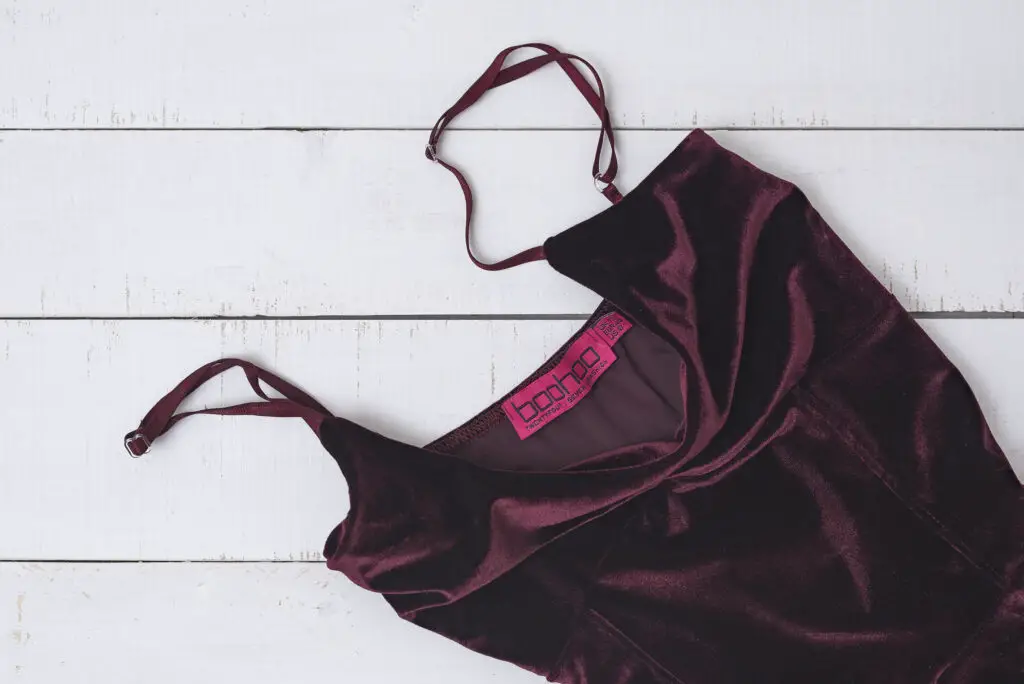
If you have a damaged dress, which is damaged below the waist, or that simply doesn’t flatter you the way it used to, cutting it down into a top can be a practical alternative to throwing it away. This doesn’t work with every dress, but most will only need a few adjustments to give them a second life. After which, they can be paired with skirts or trousers to create great new outfits.
Where to Cut
Where to cut off any individual garment depends on the style and weight of the fabric and what flatters your figure (or the person who will be wearing it). These simple guidelines will help you a good choice:-
- Clingy dresses – These can be cut almost anywhere. They can make good crop tops, but will sit right at almost any length that flatters your figure. I recommend you don’t leave them longer than waist-length, or they’ll roll up at the bottom.
- Light fabric dresses – Due to lack of weight, these dresses can lose their shape when cropped. They work best if cut to waist length, or if you leave extra fabric below the waist to tuck into your lower garments.
- Stiff dresses – Most stiff dresses don’t sit well if cropped too short. Cutting them so that the hemline is a couple of inches below your waist will create a more flattering effect.
- Satin dresses – Satin creates a particular problem because it needs weight to maintain its shape. Longer tops are easier to manage, but in any event you will need to take extra care with hemming.
Remember to leave one to two inches of extra material to form a new hem. You’ll need less for light fabrics and more for fabrics that are bulky, loosely woven or contain lycra.
How to Hem
In most cases, hemming a cut-off top is fairly simple, but there are a few tricks which can help you to do a superior job. The first is to pay close attention to the angle of vertical seams in the garment. Most won’t run straight down. Pin the edges carefully before hemming to keep their angle consistent – this will stop your new top from bunching and looking odd.
If your new top hangs straighter than you would like, disguising your curves, insert a strip of elastic inside the hem to pull it into shape. A narrow band (width-ways across the elastic) will be adequate for light fabrics, but heavy fabrics may need a wider band to be comfortable.
If your new top refuses to hang correctly or billows where you don’t want it to, placing small lead weights inside the hem, just beside the ends of seams, can help. You can buy these from any shop selling fishing supplies. Remember to stitch across the hem at either side so that they don’t move around.
Backless and Wraparound Dresses
Cutting down a backless dress may seem impossible, but it’s not. You simply need to leave a band of fabric below the scooped-out back, or, if you prefer to cut higher up, use a new piece of fabric to form a band around the lower edge of the garment. If the back doesn’t sit right after this, try inserting eyelets and lacing across it – this will effectively tailor it to fit your shape, creating a dramatic new look in the process.
Wraparound dresses need to be cut below the point at which the fabric crosses over, and ideally three to four inches below the waist. The trick to them working is by discreetly stitching them in place at several points. Alternatively, you can add buttons (this is a good idea if there is no zip in the back), or use ornamental buttons to conceal your stitching.
Dresses with Zips
Unfortunately, if your dress has a long zip down the back, you only have two options: either cut below the end of the zip, or remove it. Never to cut across a zip – this will only end in disaster. Fortunately, adding a new zip is not as difficult as you might think. It’s a good idea to buy the new zip before you start cutting, so that you can see what your options are in terms of length.
By following these guidelines, you can cut down old dresses without mishap and enjoy your new clothes.
